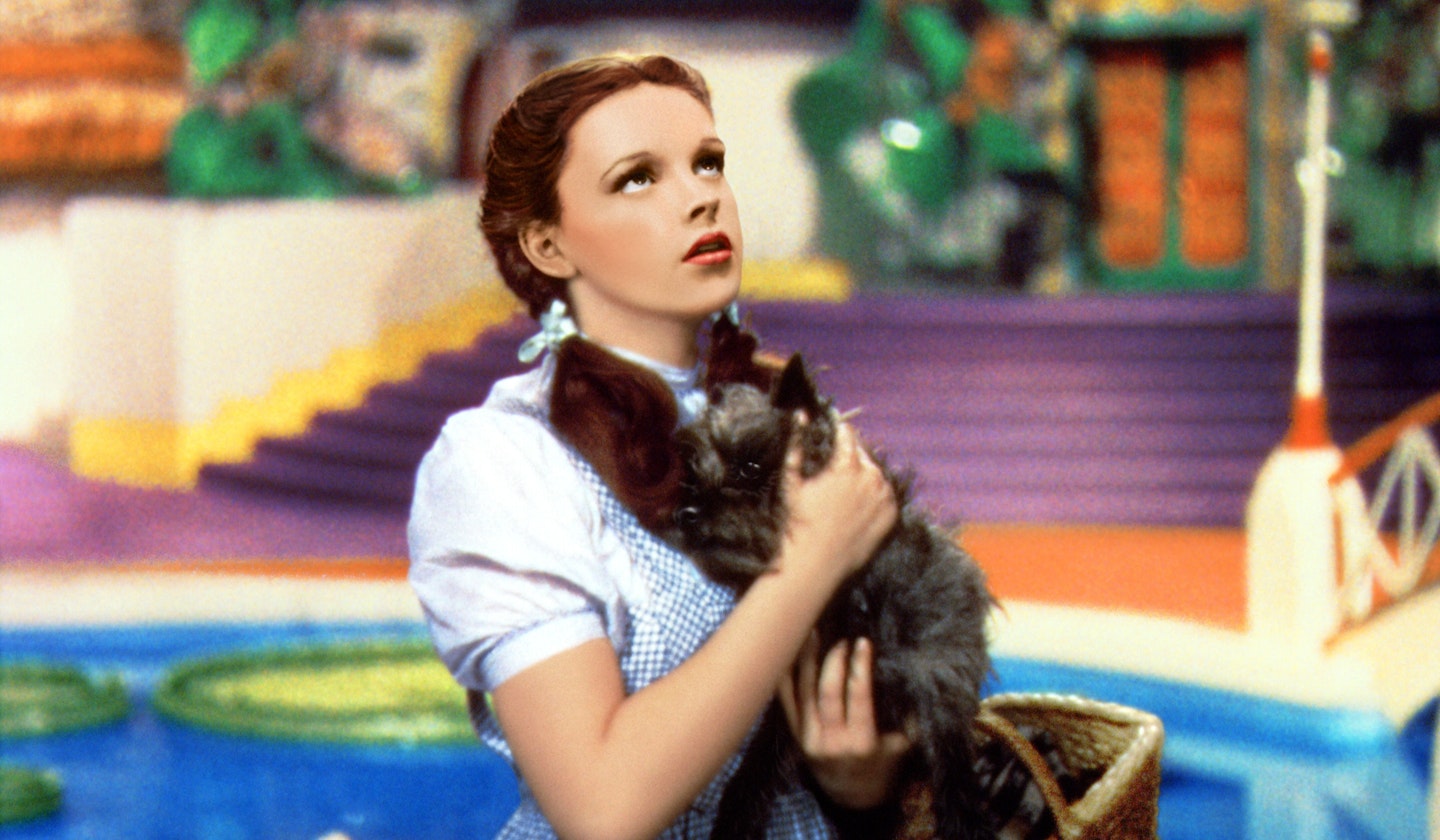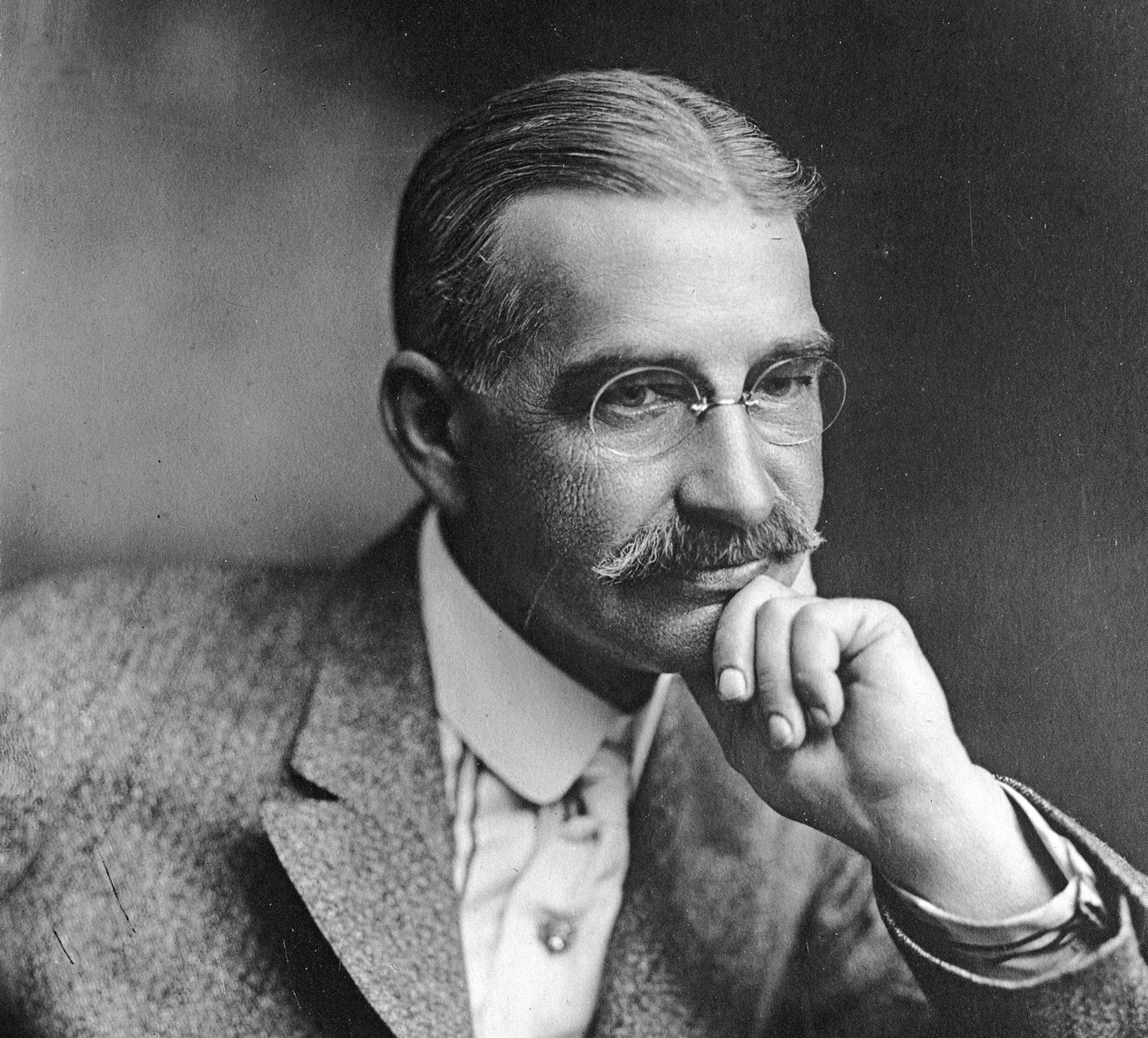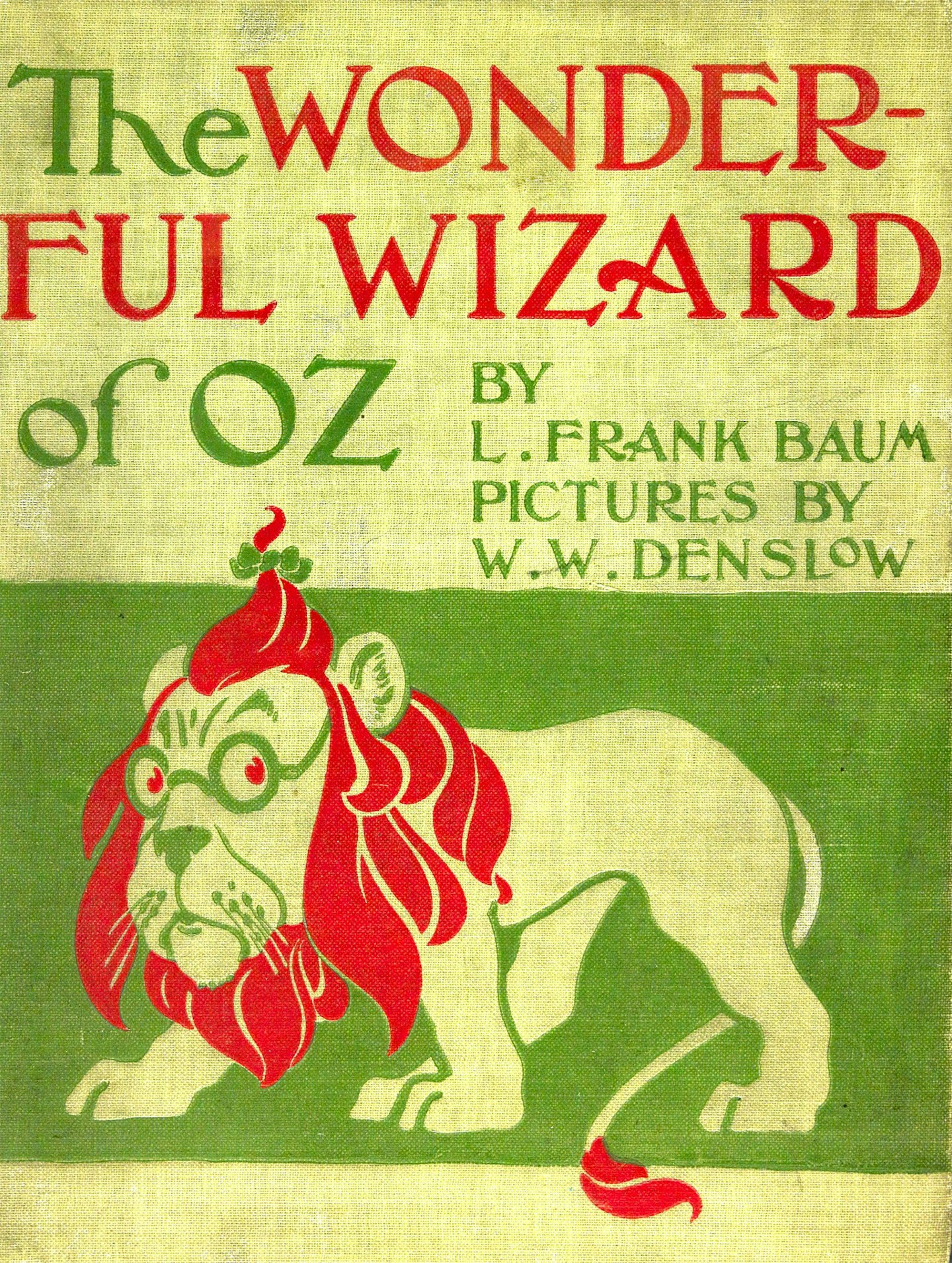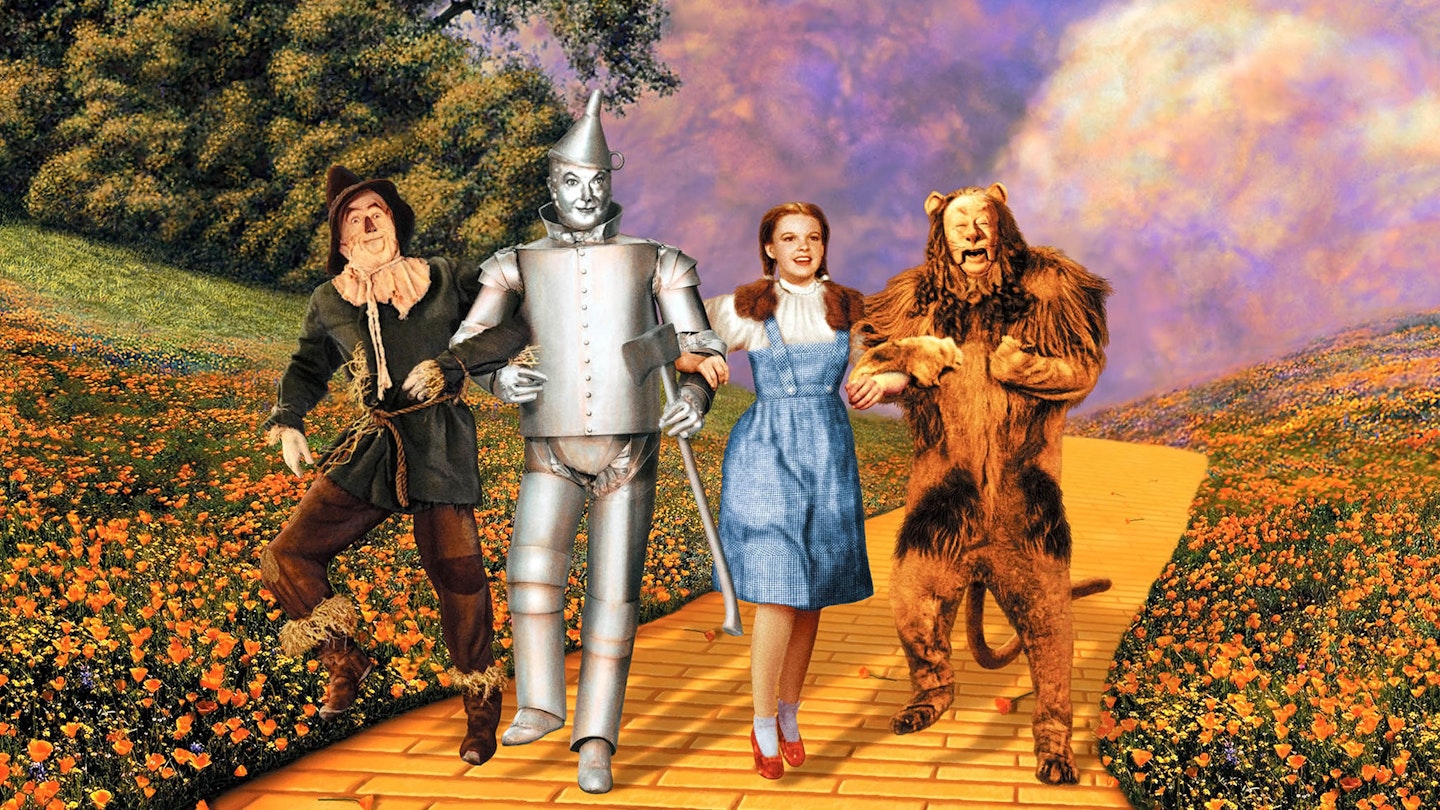From the heartache of missing home to the delight of helping tin, scarecrow and lion friends overcome their challenges, it’s a story that simply seems to be for all time.
And what makes that even more remarkable is that the original story on which the iconic film was based is this year celebrating its 120th birthday. Yes, Dorothy and Toto’s journey to The Emerald City were all first introduced to the world back when Queen Victoria was still on the throne and our ancestors were just taking the first baby steps into the most transformative century we’d ever see.
16 surprising facts about the Wizard of Oz
- Production costs went $1million over the already generous $2million budget.
- Filming took place on 65 different sets across six soundstages.
- 122 structures were built for Munchkinland, all scaled to one-fourth normal size.
- Dorothy could have looked very different; original director Richard Thorpe had given her the full Hollywood makeover with a bouncy, blonde wig and tons of makeup. Fortunately, interim director George Cukor did away with the wig and cosmetics, turning Dorothy back into a simple farm-girl.
- 20 men spent a week sticking 40,000 wire-stemmed poppies into the ground for the scene in the enchanted poppy field.
- Director Victor Fleming was a hard taskmaster and slapped Judy Garland on set one day because she had an uncontrollable fit of giggles.
- To make Dorothy’shomestead fly a small model house was dropped on the studio floor which had been painted to look like the Kansas sky then the film run in reverse.
- Technicolour was so new there was a lot of trial and error with colours. It took the art department a whole week to find the perfect hue for the Yellow Brick Road after all those years of black and white film.
- Director King Vidor stepped in to shoot the Kansas scenes including Judy’s iconic performance of Somewhere Over the Rainbow. When Fleming returned he hated the song and cut the scene but Louis B Mayer convinced him it should stay.
- 3,200 costumes were made, many of which had to be custom dyed a specific shade of green for the inhabitants of Emerald City.
- The film had four directors; Richard Thorpe was fired after a few weeks, George Cukor replaced him but left to work on Gone With the Wind, Victor Fleming stepped in until he too was summoned to work on Gone With the Wind so King Vidor was bought in to complete filming
- Letters were sent to zookeepers across the US to ask for feathers of eagles and vultures, which were then painstakingly stitched together for the wings of the flying monkeys.
- Wicked Witch of the West Margaret Hamilton suffered burns on her face and hands after pyrotechnics caught her flammable green make-up.
- Dorothy's dog Toto suffered a broken paw when one of the witch's guards accidentally stepped on its foot.
- The horses in Emerald City palace were coloured with Jelly crystals so the scenes had to be shot quickly, before the horses started could lick it off.
- Terry the Cairn terrier that plays Toto was paid $125 a week while the Munchkins only earned $50 a week.
Judy Garland as Dorothy

There are few actresses who are as inextricably linked with a particular role as Judy Garland is with Dorothy Gale in the Wizard of Oz. Already a seasoned professional 17-year-old Judy had been performing since the tender age of two and already made six films before being given the lead role in the world’s most-watched film.
Twisters, flying houses, ruby slippers and fiery witches; the scale of the film was unprecedented, although a string of mishaps and a spiralling budget meant more than a touch of magic was needed to bring Wizard of Oz to the silver screen. Helped by a $1 million marketing budget the film rocketed young Judy Garland to superstardom and earned her the Best Juvenile Performer at the Oscars – which she referred to as The Munchkin Award.
The Wizard of Oz the book

Its author L. Frank Baum had always been a bit of a dreamer. Brought up on a farm in upstate New York, his two biggest childhood passions were reading and chickens. At the age of 12 he was sent to Peekskill Military Academy and while he hated the harsh discipline it may have been here that he first saw a glimpse of his future. Many of the streets in Peekskill at the time were paved with yellow bricks from Amsterdam – a real-life yellow brick road! Nevertheless, Frank’s parents eventually allowed him to leave Peekskill at the age of 14 when it started to affect his delicate health. Having never graduated school, Frank fell into a series of failed enterprises, from establishing a store that flopped to starting a newspaper which folded. Eventually his mother-in-law said: “Frank, you’re always telling wonderful stories to children, why don’t you write them down?” And he did.
The Emerald City as he originally called the first book was a bedtime story for his four sons and was intentionally written as an alternative to traditional fairytales which Frank had always insisted were too frightening for children. Instead his stories were ‘wonder tales’ and when he finished the first book on ragged bits of paper, he framed the pencil he’d used, knowing he’d produced something great with it.
Having teamed up with illustrator William Wallace Denslow to bring his story to life, the publishers asked him to rename the book, believing it was bad luck to have the name of a jewel in the title. Frank plumped for The Wonderful Wizard of Oz, taking the name Oz from the drawer of a filing cabinet that was marked O-Z.

The book was an immediate hit selling out every copy of its initial print run.
Buoyed by its popularity, Frank went onto write 13 more books about the adventures of Dorothy in Oz, although it wasn’t all plain sailing.
In 1902 The Wizard of Oz was adapted into a musical. Frank was asked to write the initial script, but it was rejected in favour of a more grown-up, commercial version. Nevertheless, this event saw Frank fall in love with musical theatre and soon he was financing every theatrical venture going, his head well and truly lost in the world of make-believe.
By 1911 Frank was forced to file for bankruptcy having spent well beyond his means. This meant giving up the royalty rights to all his earlier works including The Wizard of Oz. At the time, he was also tired of churning out Oz story after story but had no option but to keep going back to the Emerald City to pay the bills.
In 1919, Frank suffered a stroke that would prove fatal and his final Oz story, Glinda of Oz, was published posthumously.
Frank could never know the stratospheric success his story would enjoy after his death when in 1939, MGM released a movie adaptation. Firmly rooted in Frank’s original story there were some key differences. For a start the Wicked Witch of the West was a fairly minor, rather snivelling character in the book, whereas she was much more evil, and played a much bigger part in the film. Where Dorothy’s now iconic slippers were silver in Frank’s mind, on screen they became ruby red to better show off MGM’s fancy new technicolour technology.
And, in the book, Dorothy really does travel to Oz – a magical place said to be surrounded by an enormous desert, whereas in the film it is of course all a dream.
Nevertheless, the film went on to become of the best-loved of all time, besotted by every new generation who encounter it. Frank’s story was also adapted into the musical The Wiz, starring Diana Ross and Michael Jackson and the hit stage show Wicked which tells the Oz story from the Wicked Witch’s perspective.
120 years later and still transporting so many of us over the rainbow, we can’t help but think Frank would be proud of what his sweet story of heart, mind and courage has achieved.
Most read: Janet Leigh: Psycho, her turbulent marriage to Tony Curtis and more
Most read: The life and loves of Rita Hayworth
Most read: Panto: a cherished Christmas tradition
